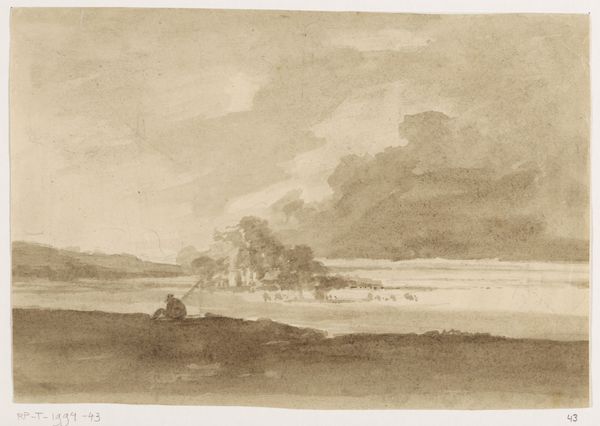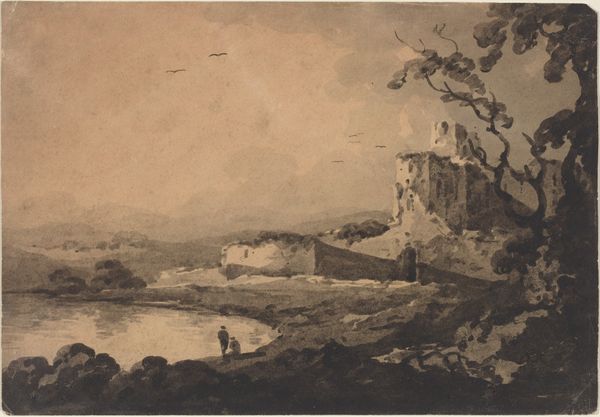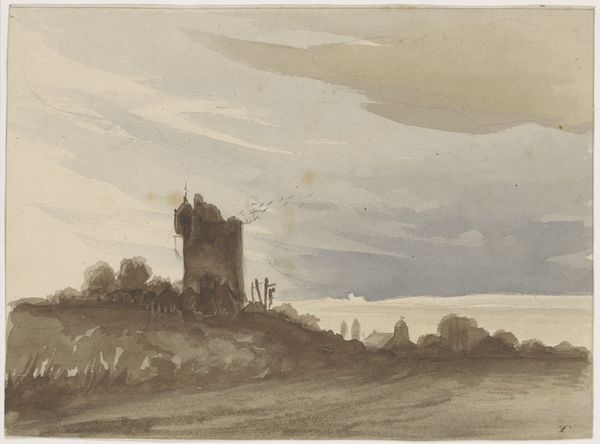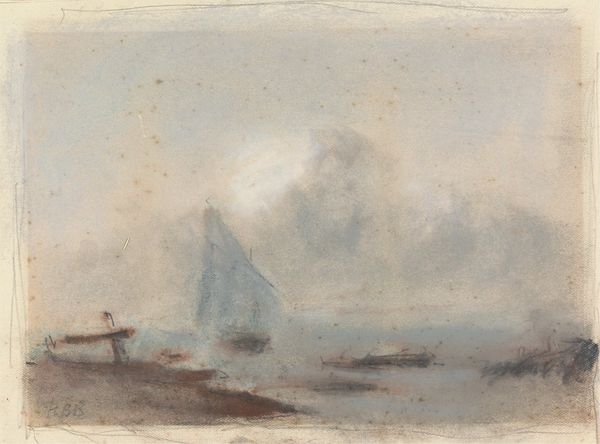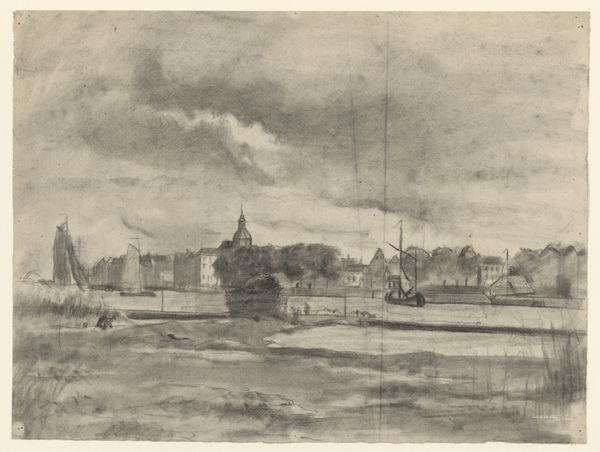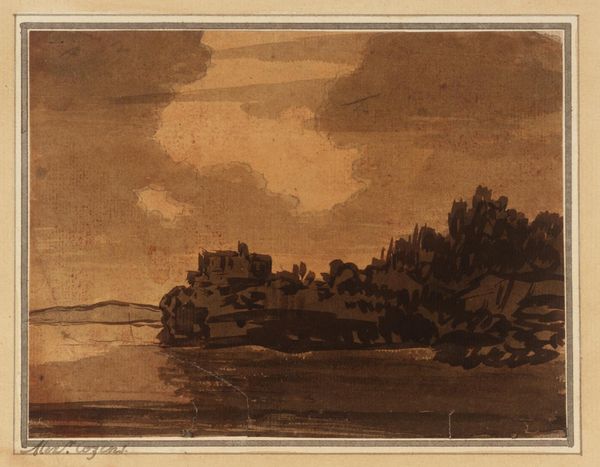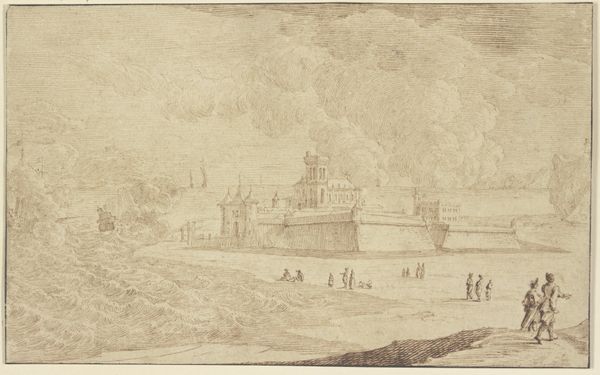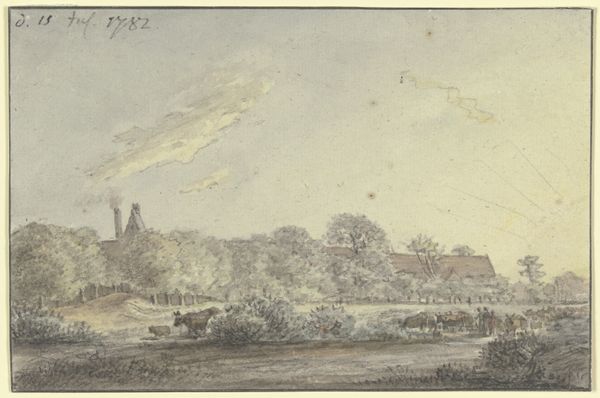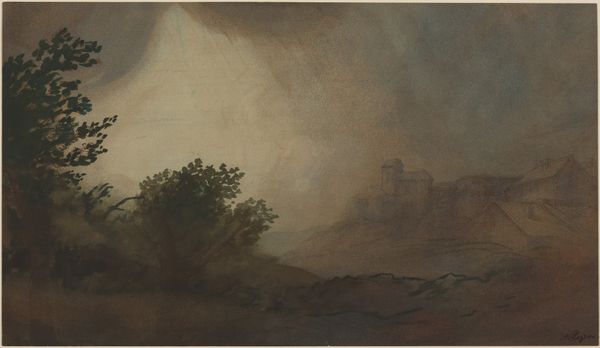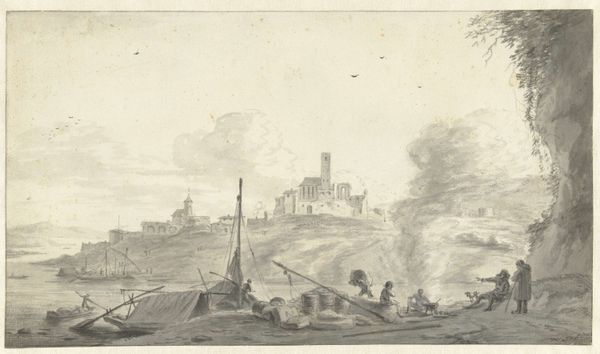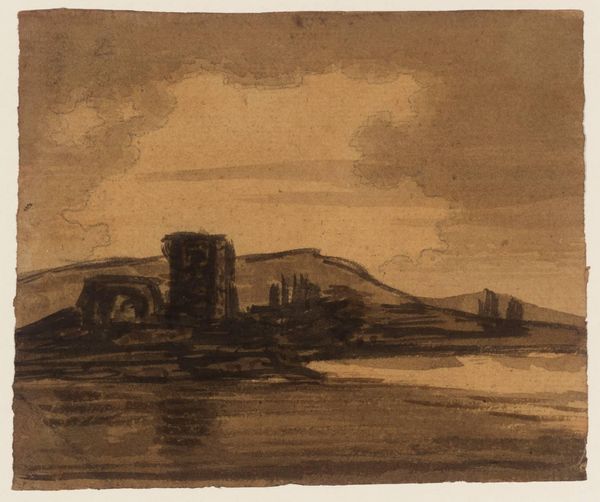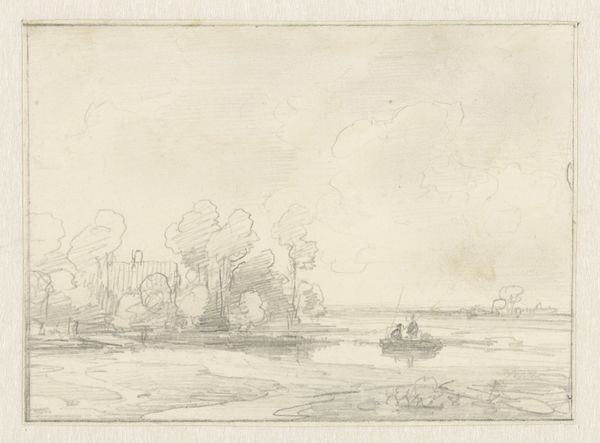
drawing, print, pencil, graphite, charcoal
#
drawing
# print
#
landscape
#
river
#
charcoal drawing
#
coloured pencil
#
romanticism
#
pencil
#
15_18th-century
#
graphite
#
cityscape
#
charcoal
#
watercolor
#
building
Dimensions: 7-1/4 x 8-7/8 in. (18.4 x 22.5 cm)
Copyright: Public Domain
Curator: This is John Baptist Malchair's "Foundry at Canon, Herefordshire," a pencil and graphite drawing from 1792. It's currently part of the collection at the Metropolitan Museum of Art. Editor: My first impression is...wistful. It's got this gauzy, almost dreamlike quality. Is it just me, or does it feel a little melancholic? All those smokestacks. Curator: That sense of melancholy is very evocative of its historical moment. Think about the rise of industrialization in the late 18th century, the impact of those foundries on the environment, on the lives of the workers... Editor: Right, like a pre-apocalyptic landscape, but rendered so delicately! There's this subtle beauty to the grays, and the reflections on the river are just gorgeous. Curator: Absolutely. It represents a complex intersection of aesthetic beauty and socio-economic transformation. Consider how the foundry dominates the landscape; this could represent a visual argument about power, labour, and early capitalism. Editor: It's true! It almost feels like the river is sighing under the weight of it all. And look how the smoke sort of bleeds into the sky... Curator: The rendering is precise yet expressive, capturing the mood of the Industrial Revolution and perhaps inviting us to reflect on the human cost of progress. Editor: The human cost, exactly. I keep wondering about the people who worked there. Did they ever see beauty in those fiery sparks and smokestacks? Or just hardship? I bet the truth lies somewhere in the murky middle. Curator: I concur. Malchair's artistry offers more than just a pretty picture. It serves as a complex historical record, demanding we look closer at the forces shaping our world. Editor: Agreed. It is so amazing how such a seemingly simple sketch can whisper such layered stories about our past... Curator: Precisely. The piece acts as a kind of sombre mirror, inviting reflections that extend from 1792 to our contemporary concerns about labour, industry, and environmental justice. Editor: So, next time someone calls pencil drawings "minor," I am dragging them here. Look closer, I'll say. Open your eyes and try again.
Comments
No comments
Be the first to comment and join the conversation on the ultimate creative platform.


